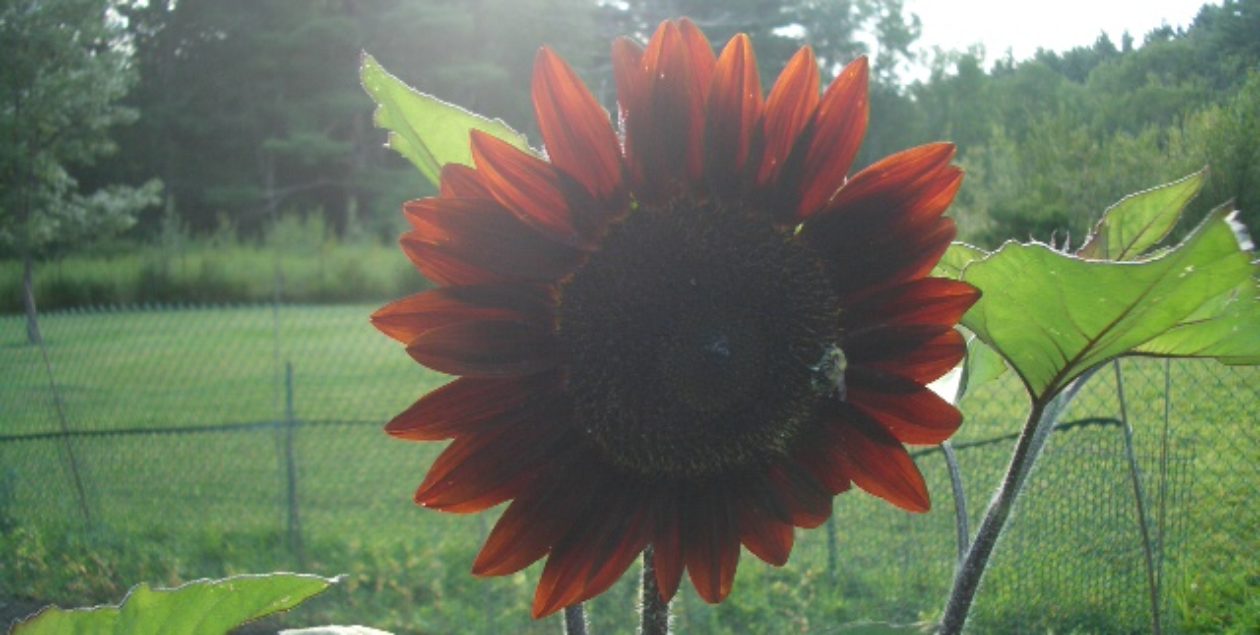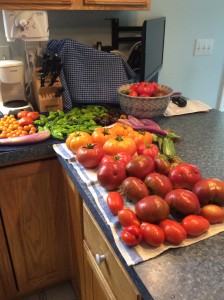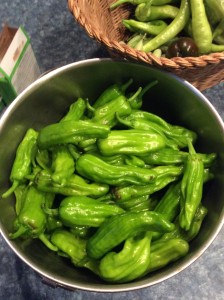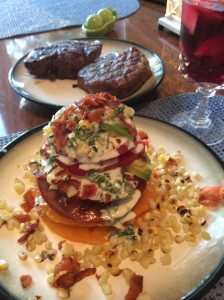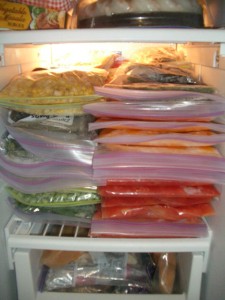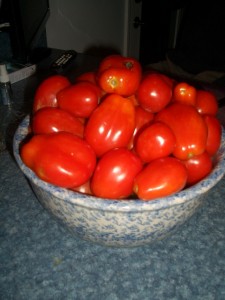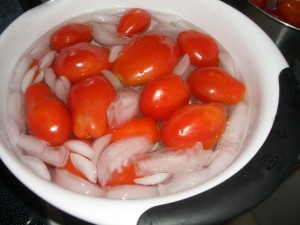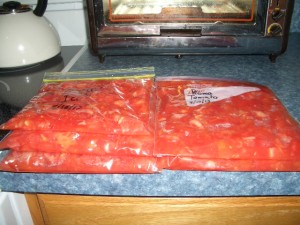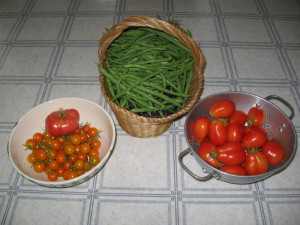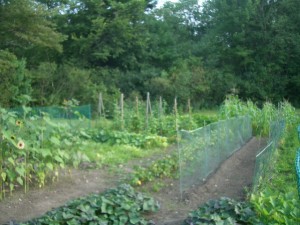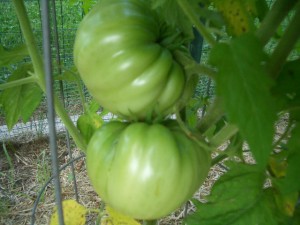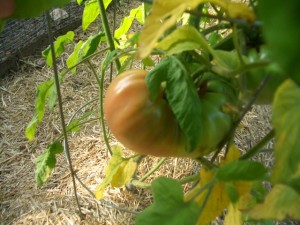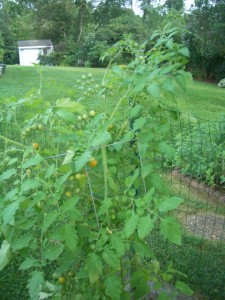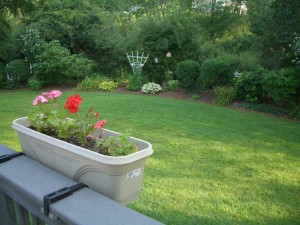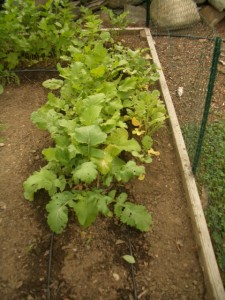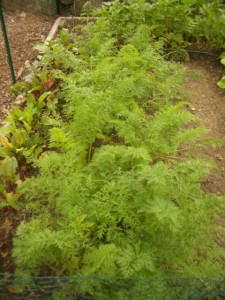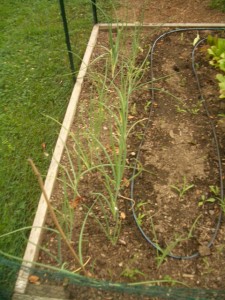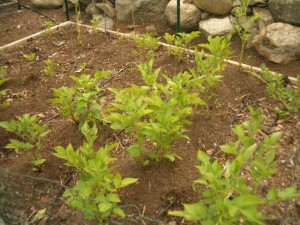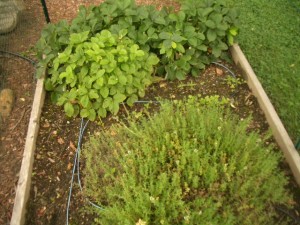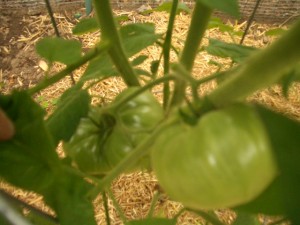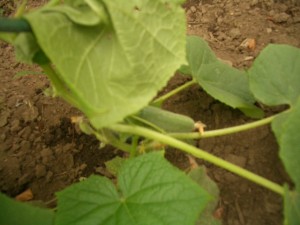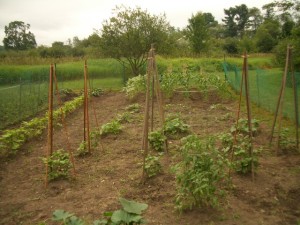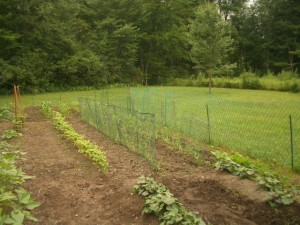Summer rolls on, and the tomatoes keep coming. We’ve done a pretty good job of managing the volume, having made an adjustment to a greater number of large tomato and fewer cherry tomato plants in the garden this year. It’s a major reason why we keep a journal, so we can improve upon each year based on previous years’ learned lessons. Having recently finished putting up our frozen tomatoes for soup and cooking, we moved onto one of our favorite condiments: barbeque sauce.
A couple of years ago J became interested in making homemade BBQ sauce from our tomatoes. We have no complaints with store-bought, but the problem with large gardens and good growing years is that production often outstrips consumption, even when being generous with the neighbors – and we’ve found absolutely no one who eats the same quantity of vegetables we do. Our sauce recipe was a bit of trial and error (this one is version number six of what we’ve tried) but it’s quickly become our favorite.
Cocktail Farmers Best BBQ Sauce
- 6 lbs tomatoes
- 2 cups chopped onion
- 4 garlic cloves
- 1 jalapeno (or other pepper with a kick)
- 2 cups cider vinegar
- 1 cup packed brown sugar
- 1/2 cup molasses
- 1 Tbs crushed pepper (black or red, depending on taste preference)
- 1 Tbs dry mustard
- 1 Tbs Kosher salt
- 1 Tbs smoked paprika
Smoke tomatoes, onion, and garlic on a smoker or charcoal grill for 1-2 hours, depending on the volume of vegetables.

This is actually 12 lbs of tomatoes, plus 4 cups of onion
Remove from heat, allow to cool slightly, and then mill with a fine screen:

Add spices to the tomato puree and boil until reduced by half.

We made a double recipe over the weekend – we smoked twelve pounds of tomatoes + onion, milled and cooled it, and parked it in the fridge for the evening, then finished the sauce and canned it yesterday. All told, it took about 8 1/2 hours which I realize sounds slightly insane, but so are we. The reduction time for the sauce is really where the hours came in – it was almost 5 to get it down to the righ consistency, but we started with 2x the volume for this recipe, so it should be shorter if you go strictly by what I’ve written above.
Twelve pounds of tomatoes made 4 16 oz jars and 3 8 oz jars:
My house has smelled amazing for two days, and I can’t wait to do a brisket in a few weeks.
